|
Limitar tu búsqueda
[+–] Creator
- De la Torre, Rodolfo (3)
- Fort, Ricardo (1)
- Glave, Manuel (1)
- Jayawardena, Priyanka (2)
- La Foucade, Dianne Althea (1)
- Lima, Martín (1)
- López Rodríguez, Patricia (4)
- López-Calva, Luis Felipe (1)
- Premand, Patrick (2)
- Rosemberg, Cristina (1)
- Sandoval, Héctor H. (1)
- Schreiner, Mark (2)
- Soloaga, Isidro (4)
- Theodore, Karl (1)
- Vakis, Renos (1)
[+–] Editorial
[+–] Fecha
[+–] Formato
[+–] Idioma
[+–] Tipo de documento
[+–] Tipo de recurso
[+–] Classification
|

|
|
Una sencilla ficha de evaluación de la pobreza para México
En este estudio se utiliza la Encuesta Nacional de Ingresos y Gastos de los Hogares de 2008 de México para crear una ficha de evaluación por puntaje que es fácil de usar y por medio de la cual se estima la probabilidad de que un hogar tenga un ingreso por debajo de una línea de pobreza dada. En la ficha se usan diez indicadores simples que los agentes de campo pueden recolectar y verificar...
|
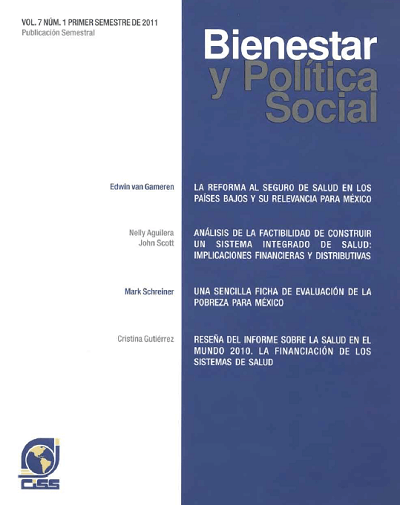
|
|
|
|

|
|
Determinantes y desigualdades socioeconómicas en las condiciones de desnutrición infantil de Sri Lanka
A pesar de los múltiples esfuerzos por mitigar la desnutrición que se han realizado a través de los años, ésta afecta a cientos de miles de niños en Sri Lanka. Es de vital importancia entender los factores determinantes y las desigualdades socioeconómicas en las condiciones de desnutrición para poder concentrar la ayuda en grupos socioeconómicos específicos con objeto de mejorar su estado de...
|
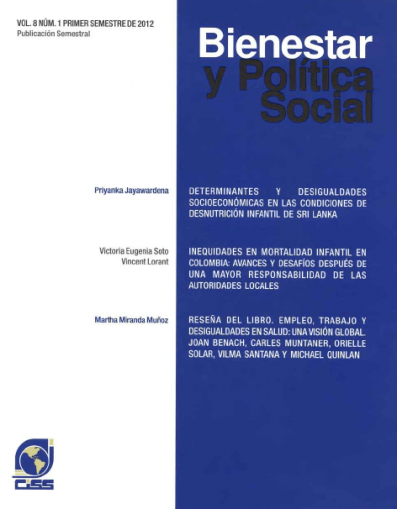
|
|
|
|

|
|
Introducción (sobre el tema de capital social que se aborda el presente número de la revista)
En las últimas décadas ha habido un creciente interés por identificar, estimar y relacionar el capital social con diversas variables del bienestar, donde la producción de beneficios o cierto rendimiento es clave. Esta actividad ha implicado la confluencia de diferentes disciplinas como la economía, la sociología, la antropología, la psicología, entre otras. A pesar de que no hay un consenso que...
|
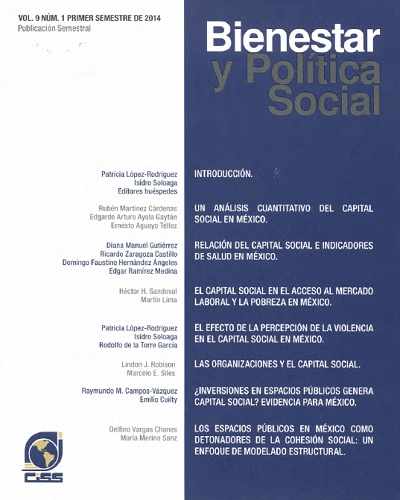
|
|
|
|

|
|
El efecto de la percepción de la violencia en el capital social en México
El incremento en la violencia que presenta México con consecuencias en la ruptura del tejido social y en variables económicas clave nos llevan a analizar el efecto del cambio en la percepción de la violencia en el cambio en el capital social –como asociativismo- entre el 2006 y el 2011, periodo en el que se inició la política contra la violencia y el crimen organizado en México (2006-2012). Se...
|

|
|
|
|

|
|
Diversity and equity: Review to indigenous peoples, poverty and human development in Latina America: 1994-2004, edited by Gillete Hall and Harry A. Patrinos
The evolution of specific welfare-related indicators for these indigenous populations during the last decade is the theme of this important book. The study declares to have four guiding questions,
to wit:
1. Have income poverty rates increased or decreased among Indigenous Peoples over the past decade, and what are the main determinants of observed trends?, How does this evolution compare to...
|

|
|
|
|

|
|
Economic polarisation and gobernality in México
The purpose of this essay is to appraise alternative hypothesis about the origins of recent social revolt in Mexico. It shows that it is not clear that a severe rise in poverty preceded the origins of violent conflict but social polarisation. Therefore, government attempts to deactivate the economic factors that led to social unrest did not necessarily upgrade povertyreduction policies. The...
|

|
|
|
|

|
|
Hurricane Mitch and consumption growth of nicaraguan agricultural households
There is little micro-evidence on the persistence of natural disasters' welfare impacts. This paper assesses the effect of Hurricane Mitch on consumption of Nicaraguan agricultura) households. Mitch occurred in October 1998. Pre-post data is obtained from a nationally representative panel collected in 1998 and 2001. An additional survey was fielded in 1999 for households from the panel affected...
|
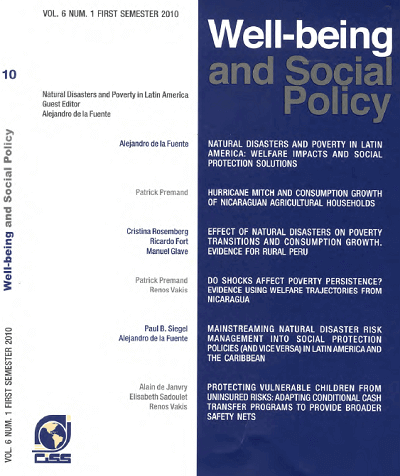
|
|
|
|

|
|
Effect of natural disasters on poverty transitions and consumption growth. Evidence for rural Peru
Natural hazards, an increasingly important phenomenon, have a direct impact at regional and household level. The growing incidence and persistence of natural events are strongly linked to increasing vulnerability of households and communities in developing countries. Previous socioeconomic vulnerabilities may exacerbate the impact of a specific event, making more difficult the process of...
|
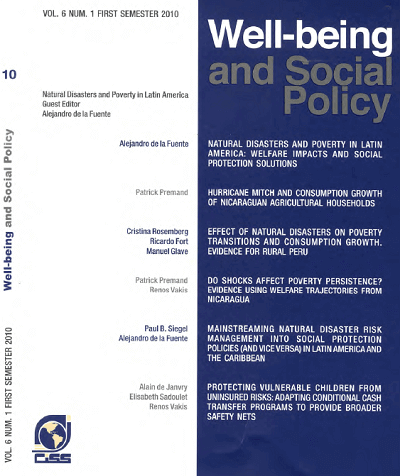
|
|
|
|

|
|
Do shocks affect poverty persistance? Evidence using welfare trajectories from Nicaragua
Shocks are often primarily associated with downward mobility or short-term movements in and out of poverty. However, households at the bottom of the welfare distribution are likely to face the most constraints to access insurance mechanisms. In this paper, we consider whether shocks directly affect poverty persistence. In order to analyze the impact of shocks on households’ welfare path over time...
|

|
|
|
|

|
|
A simple poverty scorecard for Mexico
This study uses Mexico's 2008 National Household Survey of Income and Expenditure to I construct an easy-to-use scorecard that estimates the likelihood that a household has income below a given poverty line. The scorecard uses ten simple indicators that field workers can quickly collect and verify. Poverty scores can be computed on paper in the field in about five to ten minutes. The scorecard's...
|
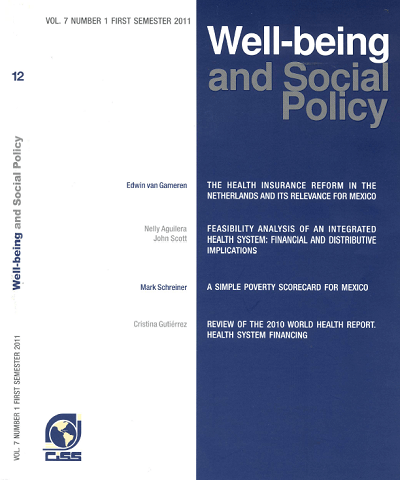
|
|
|
|

|
|
Introduction (On the issue of social capital that is addressed in this issue of the journal)
In recent decades, interest has increased in identifying, estimating and linking social capital to a variety of well-being variables in which the production of certain benefits or performance is key. Research has involved the confluence of several disciplines: economics, sociology, anthropology and psychology, to name a few. Although consensus on the definition of a single indicator for measuring...
|
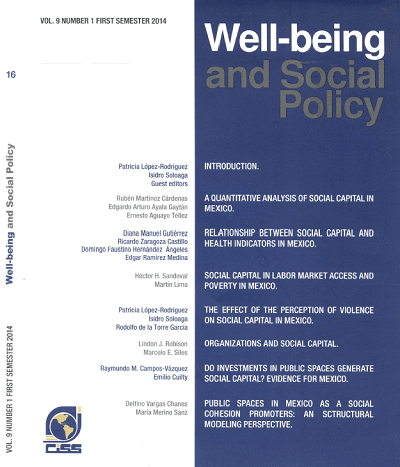
|
|
|
|

|
|
Social capital in labor market access and poverty in Mexico
Social capital, defined as the set of social networks that a person has in order to obtain benefits, is used by the population as a mechanism for providing resources, to cushion shocks in consumption and to obtain information on available employment opportunities. This study employs a logistic model to characterize the manner in which people access the labor market in Mexico through the use of...
|

|
|
|
|

|
|
The effect of the perception of violence on social capital in Mexico
Increasing levels of violence in Mexico, which have the potential to damage the very fabric of 1 society, as well as impact key economic variables, led us to analyze the effect that changes in the perception of violence had on social capital fluctuations (including associative capital) between 2006 and 2011. This was a period in which an anti-violence and anti-organized crime policy was launched...
|
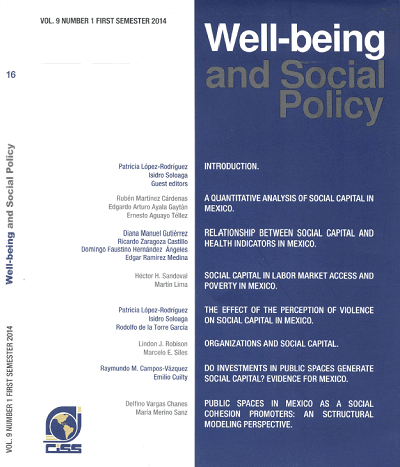
|
|
|
|

|
|
Current issues in social security: Pensions, poverty and health
This collection is a response to the growing need to reexamine the operations of social security institutions in the Caribbean and covers a number of the issues related to these social security challenges. The issues have been categorized underthe three subject areas of pensions, poverty and health with contributions being drawn from noted practitioners and researchers in the various areas....
|
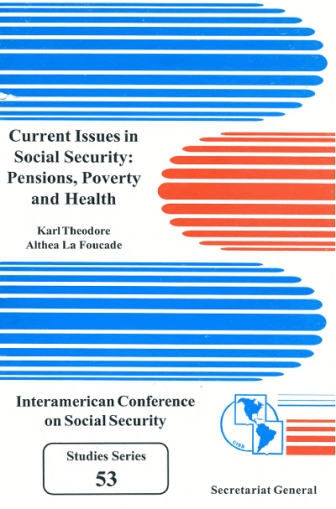
|
|
|
|

|
|
Socio-economic determinants and inequalities in childhood malnutrition in Sri Lanka
Despite countless initiatives to alleviate malnutrition over the years, it affects hundreds of thousands of children in Sri Lanka. Understanding the determinants of malnutrition and their contribution to socio-economic inequality in malnutrition is essential in targeting specific socio-economic groups to improve their nutrition levels. This study attempts to identify the socio-economic...
|
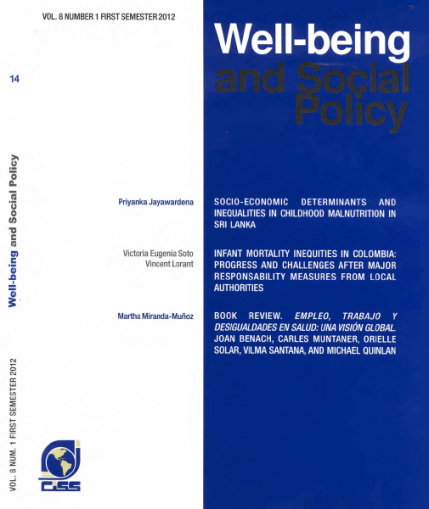
|
|
|
|
|